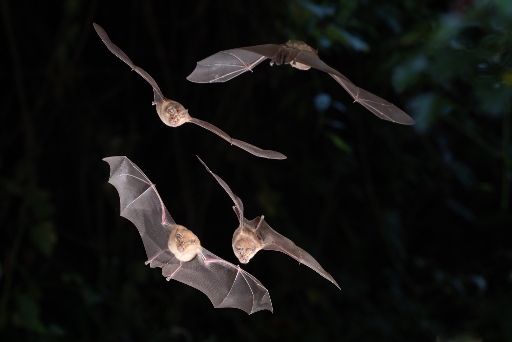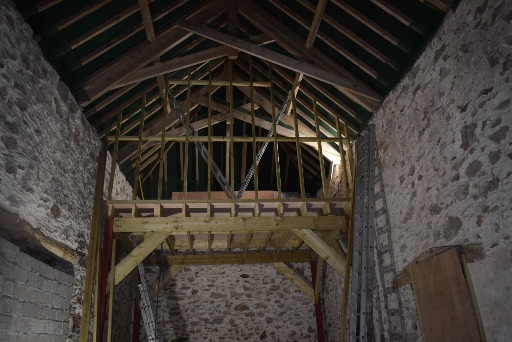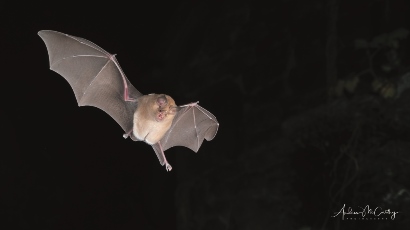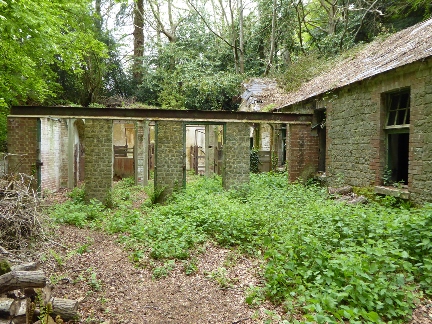Increasing efforts for greater horseshoe bats
This post is greater than 6 months old - links may be broken or out of date. Proceed with caution!

By Julia Bracewell, Senior Design and Communications Officer

Vincent Wildlife Trust (VWT) has been leading the way in greater horseshoe bat conservation for more than 40 years and has recently focused its efforts on safeguarding a very significant, newly discovered maternity roost in the southeast of England.
Since the early 1980s when the Honourable Vincent Weir, founder of VWT, became concerned about the plight of Britain’s bats, there have been several VWT research projects aimed at identifying the needs of rare bat species. From these it was clear that the widespread loss of roosting and breeding sites across the south and west of Britain was driving the dramatic decline in the horseshoe bat population.
Catastrophic crash

While Vincent was concerned about the decline in greater horseshoe bat populations in the southwest of Britain, this was just a small snapshot of a much greater crash in population numbers during the 20th century. A combination of factors, including changes in agricultural practices, increased use of pesticides and a widespread decline in the abundance and variety of insects, together with a decline in suitable habitats and a series of severe winters, resulted in a devastating population crash — a crash that reduced numbers of greater horseshoe bats by an estimated 90% to around just 4,000 individuals. Once widespread across Britain, the species had become confined to a small area in the southwest and became one of our rarest bat species.
Long road to recovery
Fortunately, the story doesn’t end there. Thanks to legal protection brought in during the 1970s (predating the 1981 Wildlife and Countryside Act) and aided by a series of mild winters during the latter 20th and early 21st centuries that allowed high rates of juvenile survival over winter and for adult females to come out of hibernation in good condition, the species started the long road to recovery. It was at this time that Vincent and VWT started to acquire a number of important breeding and hibernation sites for these very rare bats. VWT now manages 37 horseshoe bat roosts in both Britain and Ireland.
But the Trust did not stop at acquiring buildings. Unlike other bat species, the horseshoe bat anatomy means that they are unable to crawl into crevices and need to have roosts with openings large enough to fly into and suitable surfaces that they can suspend from. And, as with most bats, they have different habitat needs during the year — a warm, safe space for pups in a maternity roost and a cooler space for winter hibernation. The Trust started to look at how it could enhance the roosts to meet all these needs and to install features such as hot boxes — insulated structures designed specifically for maternity roosts where mothers can leave young pups at optimal temperatures for growth and survival while they go out to feed.

Over the years, Vincent’s original strategy of taking on buildings and enhancing them as safe roosts seems to be paying off as numbers of this species have been rising – the most recent estimate is a British population of around 13,000. I’m sure he would be delighted to know that the reserves he established are now host to around 50% of this total population, with one of the roosts being home to the largest known greater horseshoe bat maternity colony in western Europe. While the majority of the British population is still found in the southwest of England and in south Wales, there are early signs that greater horseshoe bats are expanding their range into northeast Wales, the West Midlands and the southeast of England. And while it is likely that there are a number of contributory factors, it is certain that the availability of safe and suitable roosts is a major reason for this recovery.
More good news

To add to this greater horseshoe bat good news story is the recent and very exciting discovery of a tiny breeding colony in a derelict stable block in West Sussex. This find by a member of Sussex Bat Group is the first record in 100 years of a breeding colony 100km east of its current stronghold. Although there were just a few females with pups, this building is quite possibly the most important greater horseshoe bat roost in Britain at this time… and definitely worth increasing our efforts in order to continue Vincent’s legacy of roost acquisitions. So in September 2021, VWT together with Sussex Bat Group launched a campaign to purchase, repair and enhance the building for greater horseshoe bats in the hope that it will be another stepping stone in the restoration of one of our rarest bat species to more of its former range. Once purchased, the building will need to be made weatherproof and predator proof and then work will begin to enhance the roost to meet the greater horseshoe bat’s specific needs. In return, we are hopeful that this bat will once again thrive in the southeast and continue this greater horseshoe bat good news story.
Visit www.vwt.org.uk to find out just how a fantastic effort by groups, individuals and organisations working together have saved this vital building for the future of greater horseshoe bats in southeast England.
Vincent Wildlife Trust was our featured charity in 2018. Read more about them here
More from Vincent Wildlife Trust